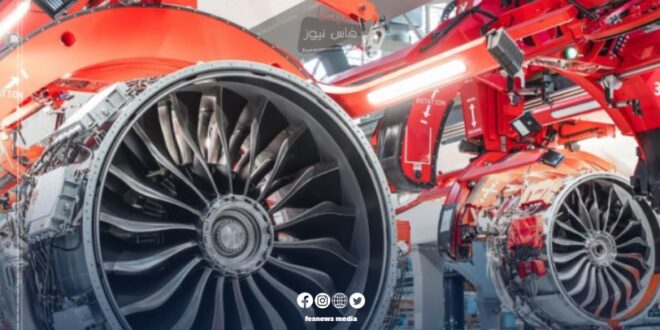In a significant boost to Morocco’s growing aerospace industry, the country’s Office des Changes has reported a substantial increase in aerospace exports for the first seven months of 2024. The sector has demonstrated remarkable resilience and growth, underlining Morocco’s rising prominence in the global aerospace market.
Key Highlights:
- Aerospace exports reached 15.34 billion dirhams (approximately $1.5 billion USD)
- 20.3% increase compared to the same period in 2023
- Reflects Morocco’s successful strategy in attracting aerospace investments
Detailed Analysis of the Export Growth
The impressive 20.3% year-on-year growth in Morocco’s aerospace exports signifies the sector’s robust recovery and expansion post-pandemic. This growth is particularly noteworthy given the global challenges facing the aerospace industry, including supply chain disruptions and fluctuating demand.
Factors Contributing to Growth:
- Strategic investments in aerospace infrastructure
- Government initiatives to attract foreign direct investment
- Skilled workforce development programs
- Proximity to European markets
- Competitive production costs
Morocco’s Aerospace Ecosystem
Morocco has been actively developing its aerospace sector over the past decade, positioning itself as a key player in the global aerospace supply chain. The country hosts over 140 aerospace companies, including major international players.
Key Players in Morocco’s Aerospace Sector:
| Company | Specialization |
|---|---|
| Bombardier | Aircraft components |
| Boeing | 3D printing, composite materials |
| Safran | Engine components, wiring |
| Airbus | Metallic subassemblies |
Impact on the Moroccan Economy
The growth in aerospace exports has significant implications for Morocco’s economy:
- Job Creation: The sector employs over 17,000 people, with potential for further growth.
- Technology Transfer: Collaboration with global aerospace leaders facilitates knowledge and technology transfer.
- Economic Diversification: Reduces dependence on traditional sectors like agriculture and phosphates.
- Foreign Exchange Earnings: Contributes significantly to Morocco’s foreign exchange reserves.
Comparison with Other Export Sectors
To put the aerospace sector’s performance in perspective, let’s compare it with other key export sectors in Morocco:
| Sector | Export Value (Jan-Jul 2024) | YoY Growth |
|---|---|---|
| Aerospace | 15.34 billion dirhams | +20.3% |
| Automotive | 80.54 billion dirhams* | +9%* |
| Phosphates | 38.56 billion dirhams* | +7.5%* |
*Data from first half of 2024, as per latest available information
Future Outlook and Challenges
While the current growth trajectory is promising, the Moroccan aerospace sector faces several challenges and opportunities:
Opportunities:
- Expansion into new subsectors like MRO (Maintenance, Repair, and Overhaul)
- Development of a local supply chain for raw materials
- Potential for increased collaboration with African markets
Challenges:
- Global economic uncertainties
- Competition from other emerging aerospace hubs
- Need for continuous skill development to meet evolving industry demands
Government Initiatives and Support
The Moroccan government has played a crucial role in fostering the growth of the aerospace sector:
- Tax Incentives: Special economic zones offering tax breaks for aerospace companies.
- Infrastructure Development: Investments in aerospace-specific industrial parks.
- Education and Training: Partnerships with universities to develop aerospace-specific curricula.
- International Agreements: Trade agreements facilitating easier access to key markets.
Expert Opinions
Industry experts view Morocco’s aerospace sector growth as a testament to the country’s strategic vision and execution. Dr. Fatima El Aouni, an aerospace economist at Mohammed V University in Rabat, notes: “Morocco’s consistent growth in aerospace exports demonstrates the success of its long-term strategy to become a global aerospace hub. The challenge now is to sustain this growth and move up the value chain.”
Conclusion
The 20.3% growth in Morocco’s aerospace exports in the first seven months of 2024 is a clear indicator of the sector’s vitality and the country’s growing importance in the global aerospace industry. As Morocco continues to invest in infrastructure, skills development, and fostering innovation, the aerospace sector is poised to play an increasingly significant role in the country’s economic landscape.This growth not only bolsters Morocco’s economic diversification efforts but also positions the country as a key player in the global aerospace supply chain. As the sector continues to evolve, it will be crucial for Morocco to address challenges and capitalize on emerging opportunities to maintain its upward trajectory in this high-tech, high-value industry.
 فاس نيوز ميديا جريدة الكترونية جهوية تعنى بشؤون و أخبار جهة فاس مكناس – متجددة على مدار الساعة
فاس نيوز ميديا جريدة الكترونية جهوية تعنى بشؤون و أخبار جهة فاس مكناس – متجددة على مدار الساعة













